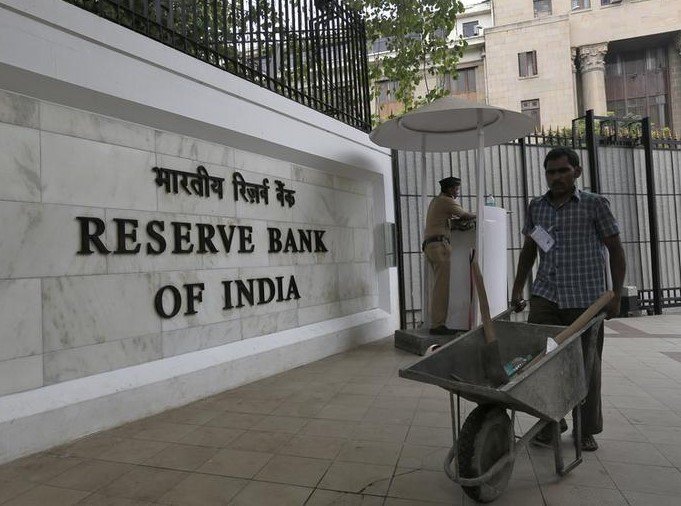Strong capital, falling bad loans, and rising bond markets are keeping India’s lenders healthy — but it’s not business as usual.
India’s banking sector is holding up better than expected. Credit growth might’ve dipped from last year’s surge, but the Reserve Bank of India says the underlying strength of banks and NBFCs remains rock solid. In its August 6 monetary policy update, the central bank flagged a slowdown but pointed to strong capital levels, improved asset quality, and enough liquidity to keep the wheels turning.
While corporate India is borrowing less from banks and leaning more on bond markets and internal funds, regulators aren’t worried. At least not yet.
Credit Growth Slows, But Still Beats Long-Term Averages
Let’s start with the slowdown. The pace of bank lending dropped to 12.1% in FY25 from 16.3% the year before. But before panic sets in — context matters.
Over the past decade, the average credit growth rate has hovered around 10.3%. So yes, it’s slower than last year, but it’s still above trend. RBI made a point to highlight this.
It’s not exactly a red flag. It’s more of a yellow one.
Some banks are calling it a “normalisation” after the post-pandemic lending boom in 2022–23. Others say large corporates simply aren’t borrowing as much because they’re using their own cash or tapping cheaper debt markets.
Bad Loans Are Falling and Capital Is Holding Up
The real kicker in the report? Asset quality is improving.
The gross non-performing asset (GNPA) ratio fell to 2.24% in June 2025 — down from 2.67% a year earlier. That’s the lowest it’s been in over a decade. For a country that not long ago had a full-blown bad loan crisis, this is serious progress.

Even better, banks are sitting on a lot of capital. The capital to risk-weighted assets ratio (CRAR) is at 17.44%. That’s way above the regulatory minimum.
Here’s a quick snapshot of where key health indicators stand:
| Indicator | Value (June 2025) | Comment |
|---|---|---|
| Credit Growth (FY25) | 12.1% | Slower, but above 10-yr avg |
| GNPA Ratio | 2.24% | Lowest in over 10 years |
| CRAR | 17.44% | Well above required minimum |
| Liquidity Coverage Ratio (LCR) | 132.80% | Strong buffer |
| Return on Assets (RoA) | 1.34% | Indicates stable efficiency |
| Return on Equity (RoE) | 12.70% | Healthy profit generation |
One-line paragraph for a breather.
So yeah, things are looking better than they feel.
Corporates Are Borrowing Less From Banks — And That’s the Point
There’s a shift happening, and RBI sees it clearly. Large companies aren’t relying on banks as much.
Instead, they’re:
-
Raising funds through bonds at lower yields
-
Relying on internal accruals due to strong profits
-
Using global debt markets selectively
Bankers say corporate credit demand has become “opportunistic” rather than “strategic.” That means companies borrow when rates are good — not because they need to.
NBFCs have also felt the pinch, but they’ve diversified better. Some are doubling down on consumer loans and rural lending, while others are looking at structured finance and co-lending partnerships.
This isn’t necessarily bad. It’s just different.
Profitability Is Still Holding Steady for Banks and NBFCs
RBI flagged that key profitability ratios — RoA and RoE — are stable. That’s not a given in a slower credit cycle.
Return on Assets at 1.34% is modest, but it shows that banks are running efficiently even without chasing aggressive loan growth. Return on Equity at 12.70% shows shareholders are still getting a decent deal.
Smaller public-sector banks are showing particular improvement thanks to cleaner balance sheets and better recovery on old loans.
Private sector lenders, as usual, are ahead on margins and fee income, but they’re being cautious too — especially in unsecured retail.
There’s one paragraph in this section that’s just one sentence. Because it should be.
NBFCs are more mixed. Some consumer-focused lenders have enjoyed strong demand. Others are more cautious, especially those exposed to real estate or MSMEs.
Liquidity and Capital Buffers Offer Enough Cushion — For Now
One of RBI’s main concerns post-COVID was how banks would hold up in a funding crunch. Turns out, they’re pretty well cushioned.
The system-wide liquidity coverage ratio (LCR) was 132.80% — that’s a solid safety net. Anything above 100% means they can survive a short-term cash crunch.
Capital buffers remain high, and with fewer bad loans eating into profits, most banks aren’t under stress.
But RBI didn’t get too cheerful. The statement hinted that future risks could still emerge — especially if global shocks or domestic inflation pressures return. For now, though, the sector is holding strong.
And honestly, holding strong might just be enough.








